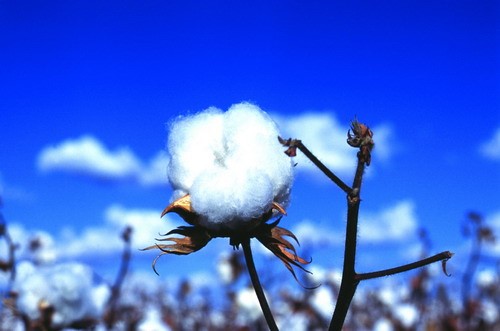Cotton ushered in a new climbing cycle
In 2015/2016, the domestic cotton market experienced a V-shaped trend, with market sentiment changing from extremely pessimistic to optimistic. AAAFSGRETEGSDFW Disclaimer: Some of the texts, pictures, audios, and videos of some articles published on this site are from the Internet and do not represent the views of this site. The copyrights belong to the original authors. If you find that the information reproduced on this website infringes upon your rights, please contact us and we will change or delete it as soon as possible. AA
We believe that from a cyclical perspective, March and April 2016 Monthly cotton prices have successfully bottomed out, and a new cotton cycle has begun. The focus of cotton prices in 2016/2017 will gradually shift upward, but as market sentiment and expectations change, the probability of a unilateral trend in the cotton market decreases, and oscillation will be the main theme.
The new cycle is in the startup stage
Since 2000, the cotton market has Judging from the formation, progress and decline of the cycle, it has experienced three complete cycles of ups and downs.
Period, November 2001 to November 2004. In 2001, the Internet bubble burst and the economic downturn combined with the impact of the 9/11 incident in the United States accelerated the bottoming process of cotton prices. In 2001, my country joined the WTO. In 2003, cotton production was reduced and the economy overheated, which pushed up cotton prices, causing high cotton production and falling prices in 2004.
Second cycle, November 2004 to November 2008. In 2005, quota restrictions on my country’s fabric workwear exports to countries and regions such as Europe and the United States were lifted, but trade disputes continued. Cotton production was reduced in 2005, and the international economic crisis broke out in 2008, which accelerated the bottoming of cotton prices.
The third cycle, November 2008 to March 2016 . The situation in this cycle is relatively extraordinary and can be considered as a historic situation that can be encountered but cannot be sought: first, production was reduced for two consecutive years in 2009 and 2010; second, the state reserve basically bottomed out; third, Zhengzhou Commercial Exchange revised the 2010 annual Registration rules for warehouse receipts. Fourth, multiple factors push up cotton prices. From 2011 to 2013, my country carried out unlimited temporary purchases and storage for three consecutive years, which increased market demand, slowed down the decline in cotton prices, and lengthened the cycle. In 2014, my country exited the temporary purchase and storage policy and implemented target price reform, and cotton prices returned to the market.
We believe that we are currently in the initial stage of a new cycle, and cotton prices The bottom was confirmed in March and April 2016. For the later trend, if cotton prices rise, it will require the cooperation of macroeconomics, supply and demand and other factors. In terms of macroeconomics, China’s economy is currently in a period of structural adjustment. The relative excess production capacity needs to be digested, and new economic growth points are not yet mature. In terms of supply and demand, the state reserve cotton inventory is still huge, and the Chinese government has strong regulatory capabilities. There is no foundation for the sharp rise in cotton prices in 2016/2017.  Domestic market expectations have changed, and it is difficult for cotton to show a unilateral trend
Domestic market expectations have changed, and it is difficult for cotton to show a unilateral trend
According to us According to the survey, market expectations for 2016/2017 have changed significantly compared with 2015/2016. Market pessimism has dissipated, and ginning companies have reduced their impulse to sell goods in the early stage, which has slowed down the pressure of falling cotton prices in the early stage, thereby weakening the upward trend in cotton prices in the later period. motivation.
Cotton supplier: In 2015/2016, cotton prices first fell and then rose. Many ginners that sold their goods in advance lost money or made little money. In 2016/2017 The possibility of panic selling during the year is reduced. Some ginners said they have plans to reserve a small amount of high-quality cotton for sale during the storage period, thereby easing the pressure on cotton prices to fall in the first half of the year.
Cotton demand side: In 2015/2016, there was a strange phenomenon that Xinjiang’s fabric companies had no cotton available. Fabric companies transport cotton from outside Xinjiang to Xinjiang for production. In order to ensure the smooth progress of production, in 2016/2017, fabric companies in Xinjiang will increase the amount of cotton they lock in the new year in advance, thereby slowing down the possible sharp increase in cotton prices in the later period.
Overall, the impact of the policy cannot be ignored. Cotton in 2016/2017 The price center of gravity will gradually move upward, and oscillation will be the main theme.
Disclaimer:






